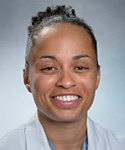May 5th, 2017
Deep Brain Stimulation Targeting in Neurosurgery, Part III of III
Bianca Belcher, MPH, PA-C
This is the final part of a three-part series on deep brain stimulation (DBS) targeting designed for providers who lack an intimate level of knowledge and/or experience with this subject matter. In Part I, I discussed the ventralis intermedius (Vim) target as well as an overview of DBS, equipment, and programming, and Part II covered the […]
March 29th, 2017
Deep Brain Stimulation Targeting in Neurosurgery, Part II of III
Bianca Belcher, MPH, PA-C
This is Part II of a three-part series on deep brain stimulation (DBS) targeting designed for providers who lack an intimate level of knowledge and/or experience with this subject matter. In Part I, the ventralis intermedius (VIM) target as well as an overview of DBS, equipment, and programming were discussed. Globus Pallidus Internus (GPi) Where is […]
February 24th, 2017
Deep Brain Stimulation Targeting in Neurosurgery, Part I of III
Bianca Belcher, MPH, PA-C
This three-part series is for providers who lack an intimate level of knowledge and/or experience with deep brain stimulation (DBS) targeting. My goal is to provide a baseline understanding of each target, its indications, contraindications, and adverse side effects that may be observed from imperfect electrode placement and/or imperfect programming. Specifically, I will discuss the basics […]
January 19th, 2017
Interview with Jon Harris, PA-C — Health Care for the Homeless
Bianca Belcher, MPH, PA-C
I met Jon Harris, PA-C, during his days as a PA student at Northeastern University and was immediately impressed. He excelled in my course, and I knew that he was destined to be an impactful clinician. He previously had graduated from Columbia University with a degree in environmental sciences and spent several years working in […]
December 8th, 2016
Intracranial Aneurysms for the Non-Neurosurgical Provider: Primer Series, Part 3
Bianca Belcher, MPH, PA-C
In part 3 of this primer series, I will discuss a basic overview of monitoring patients who are not undergoing treatment for intracranial aneurysm as well as potential treatment options for those who are. (See part 1 for a summary of natural history studies and part 2 for information on patient risk factors.) Many times the […]
November 2nd, 2016
Intracranial Aneurysms for the Non-Neurosurgical Provider: Primer Series (Part 2)
Bianca Belcher, MPH, PA-C
In Part 2 of this primer series on intracranial aneurysms for non-neurosurgical providers, I will discuss modifiable and non-modifiable patient risk factors for subarachnoid hemorrhage (SAH) during intracranial aneurysm treatment. Modifiable Risks: Hypertension (HTN)[1] Patients with mild-moderate HTN (defined by systolic blood pressure of 130-169 mmHg) have a hazard risk (HR) of 2.3 for SAH compared with patients with […]
October 12th, 2016
Intracranial Aneurysms for the Non-Neurosurgical Provider: Primer Series (Part 1)
Bianca Belcher, MPH, PA-C
Intracranial aneurysms are unnerving, but not all aneurysms are created equally. It’s no secret that nearly 50% of people with intracranial aneurysm ruptures die before they get to the hospital, and of the 50% who make it to the hospital, about 30% die despite our best efforts. Our office often gets urgent referrals from non-neurosurgical […]
August 25th, 2016
Travel Medicine: An Interview with Derek Hersey, MPAS, PA-C
Bianca Belcher, MPH, PA-C
One of the things that I love most about my profession is its extreme versatility. I’ve been fortunate to meet PAs who are doing interesting things in their careers. As a student, I rotated with Derek Hersey, PA-C for internal medicine, and found his niche of travel medicine extremely interesting. Fast forward a few years, […]
July 20th, 2016
The Fringe: Part 4 – Retirement
Bianca Belcher, MPH, PA-C
Retirement contributions are often thought about late in the game. You’re never too young to start contributing to “your future self” but it is difficult to figure out where to start, which type of plan to use, and how much to contribute to your retirement at this stage of your life/career. Here is a brief Q&A […]
June 8th, 2016
The Fringe: Part 3 – Deciphering Your Benefits Package
Bianca Belcher, MPH, PA-C
It is important to review more than just your salary when considering whether or not to accept a job. The rest of your benefits package could contribute significantly (or negatively impact) your long term financial health. Much of this is overlooked by new graduates and providers that claim that finance/money isn’t their thing. In a small, unofficial poll […]


